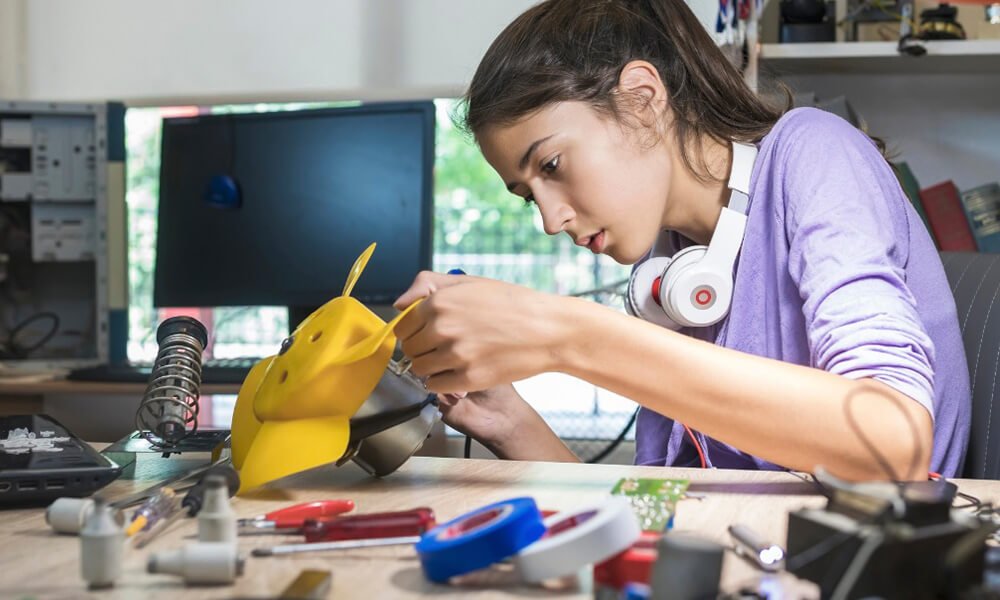
Closing the Digital Divide: How to Boost Support for Girls’ Digital Literacy
What is the digital divide?
This phrase refers to the gap between individuals, groups, or communities who have access to modern information and communication technologies, such as the internet, computers, and smartphones, and those who do not.
It’s a shorthand way of referring to global disparities in access to and use of digital technologies and services. Unfortunately, the digital divide is much more likely to affect girls and women when compared to their male counterparts.
Even though 90% of the world’s jobs have some kind of digital component, more than 50% of the world’s women are offline. Even if they do use technology, the devices and tech tools used by women are more likely to be:
- Shared by other members of their household (not private)
- Unable to access the internet
- Loaded with simpler features than devices used by men
How the Digital Divide Affects Girls
The digital divide affects girls in many different ways, depending on their location, demographics, and circumstance.
In less affluent nations, this divide is often easier to see, with girls being actively kept out of opportunities to use and benefit from technology. In more prosperous and developed areas, the digital divide may manifest as an unspoken bias that keeps girls from pursuing higher education or interest in STEM subjects.
Here are some other ways the digital divide affects girls.
- Lower access to current news and information
- Decreased workforce participation as they get left out of jobs that require digital literacy
- Unwillingness to engage in stereotypically male fields like STEM
- Less civic engagement and awareness of their rights
In any way it manifests, the digital divide is profoundly damaging and can prevent girls from gaining the experience necessary to compete in the modern job market and access the opportunities that technology can provide. This can perpetuate the cycle of poverty and limits the potential of girls and the communities they live in.
How Can We Bridge the Digital Divide?
Bridging the digital divide requires a concerted effort to address the systemic and cultural barriers that keep girls from engaging with technology.
Wherever you are, you can take steps to provide access to technology and education to girls. You can also work on challenging and changing gender stereotypes and biases that limit girls’ opportunities in the tech industry and beyond.
Here are some steps you can take at home and in the classroom (if you have access to one) to help girls bridge the digital divide.
1. Address stereotypes when you encounter them
Whether you’re a parent, teacher, carer, or mentor, any adult can make a meaningful impact when they address and correct damaging stereotypes.
Some of the stereotypes that perpetuate the digital divide are:
- Girls aren’t as good at STEM subjects like math or science
- Girls don’t have much interest in complex technological problems
- You have to be born with an interest in STEM
- Tech is completely male-dominated and hard to succeed in as a woman
By acknowledging and then debunking these stereotypes, mentors can encourage girls to harness technology in a way that makes a difference in their lives.
2. Encourage your girls to explore technology
Parents can encourage girls to explore technology by introducing them to coding, robotics, and other STEM-related activities early in life. There are lots of resources are available online, such as coding apps and games, that can help spark girls’ interest in technology.
3. Promote positive role models
Parents can promote positive role models for girls by highlighting successful women in technology and STEM-related fields. This may include sharing stories of women in STEM or highlighting accomplishments that would not have been possible without the work of female scientists, engineers, and mathematicians.
4. Advocate for broadband as a utility
During the pandemic and the resulting rise in online learning, we saw just how integral access to secure and reliable broadband internet is to our children. Even if you have reliable internet yourself, you can still advocate for those in your community who do not.
Encouraging Our Girls is Key to Narrowing the Digital Divide
Narrowing the digital divide requires us to challenge stereotypes, promote positive role models, and work hard to increase access to technology and education for girls worldwide.
Want to learn more about the issues that affect our girls? Check out the resources section, where I offer tips on how parents, teachers, and mentors can make a positive difference when working with girls.

